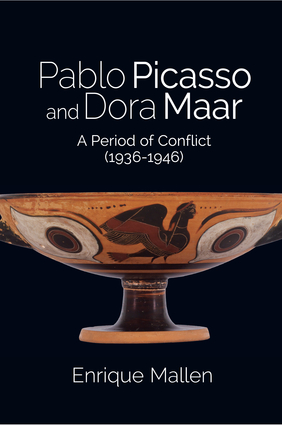Overview
Although Pablo Picasso spotted Dora Maar at a café in January 1936 it is highly likely that she had come to his attention prior. As Brassaï, a Hungarian-French photographer, recalled, “It was at Les Deux-Magots that, one day in autumn 1935, [he] met Dora … On an earlier day, he had already noticed the grave, drawn face of the young woman at a nearby table, the attentive look in her light-colored eyes, sometimes disturbing in its fixity. When Picasso saw her in the same café in the company of the surrealist poet Paul Éluard, who knew her, the poet introduced her to Picasso” (Brassaï, a.k.a. Gyula Halász, Conversations with Picasso [University of Chicago Press, 1999]). Tinged with a seductive mix of violence and dark eroticism, this first meeting has attained mythical status in the story of the artist’s life. It reads like an unreal fantasy. A mysterious and feline beauty, which Man Ray had captured in the pictures he took of her, a companion of Georges Bataille, Dora was an accomplished photographer, close to the Surrealists’ revolutionary aesthetics. Picasso addressed her in French, which he assumed to be her language; she replied in Spanish, which she knew to be his. For the nextAuthor Biography
Dr. Enrique Mallen, Professor at Sam Houston State University (SHSU), is Director and General Editor of the Online Picasso Project (OPP), a digital catalogue raisonné on Pablo Picasso used by Picasso scholars throughout the world. He has written extensively on Picasso’s Cubist and Surrealist periods, as well as on Picasso’s literary writings.

